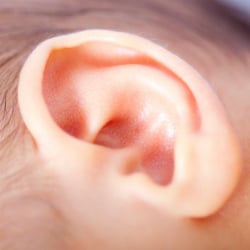
Ear Trauma Emergencies
7 November 2013
Most ear emergencies result from some form of trauma. This trauma can be self-induced–a child’s putting a foreign object in the ear– or accidental–exposure to the blast from a firecracker or gun.
Causes
Trauma to the ear usually results from one of four common factors.
Foreign Objects
Both adults and children are guilty of putting objects into the ear. Children are more likely to insert a small object into the ear canal that becomes stuck and cannot be removed. Foreign bodies, if not removed quickly, may cause swelling and excruciating pain. Occasionally, a child must be given an anesthetic in order to remove the foreign body. Adults are more aggressive when putting foreign bodies in their ears. Their objective is usually to clear the canal of wax, or to relieve an itch. Objects such as swabs, paperclips, hairpins and keys have been used, occasionally resulting in injury and infection of the ear canal and in more serious cases injury and infection of the ear canal and in more serious cases damage to or perforation of the eardrum (also called the tympanic membrane, or TM).
Barotrauma
Barotrauma results from changes in pressure between the middle ear and the outside air. This is usually associated with rapid changes in altitude such as those experienced when flying, driving up and down in the mountains or scuba diving. A frequent result of barotrauma is a perforated TM.
Concussive Trauma
Concussive trauma resembles barotrauma in that there is an extremely rapid change in pressure against the TM. This may result from a blow to the ear, exposure to the sound of an explosion or the concussion from a gunshot near the ear. This trauma can cause perforation of the eardrum, tinnitus (ringing in the ear), hearing loss and vertigo. One of the most common causes of perforated TM in the United States is water skiing. When a person falls from a water ski and hits the water, pressure in the ear canal may rise, causing a perforated TM.
Symptoms
- Earache
- Sudden hearing loss
- Drainage or bleeding from the ear
- Sudden onset of ringing in the ear (usually associated with sudden hearing loss)
- Dizziness or nausea
First Aid
- If you can see an object in the ear clearly and you can grab the end of it easily with a tweezers, you can remove the object.
- If you can’t see what’s stuck in the ear, get medical help. Don’t try to dig into the ear canal with tweezers or another instrument. You could force the object deeper into the ear or damage the eardrum.
- If the eardrum may have been ruptured, put some sterile cotton in the outer part of the ear to keep it clean while you get a doctor’s help.
- Don’t flush your ear if you think you may have a ruptured eardrum or an infection.
- If the ear is draining, have the person lie on his or her side with the affected ear down so that it can drain.
- Ease pain by placing a warm cloth on the ear.
Preventative Care for Ear Emergencies
- Never put anything inside your ear to clean it. A cotton swab can puncture your eardrum. Use a washcloth and your finger to clean your ears.
- Protect your ears at times when there is likely to be loud noise, such as at a live concert, by using earplugs.
Reviewed by Trauma specialists at the Montreal Children’s Hospital.
June 2020
